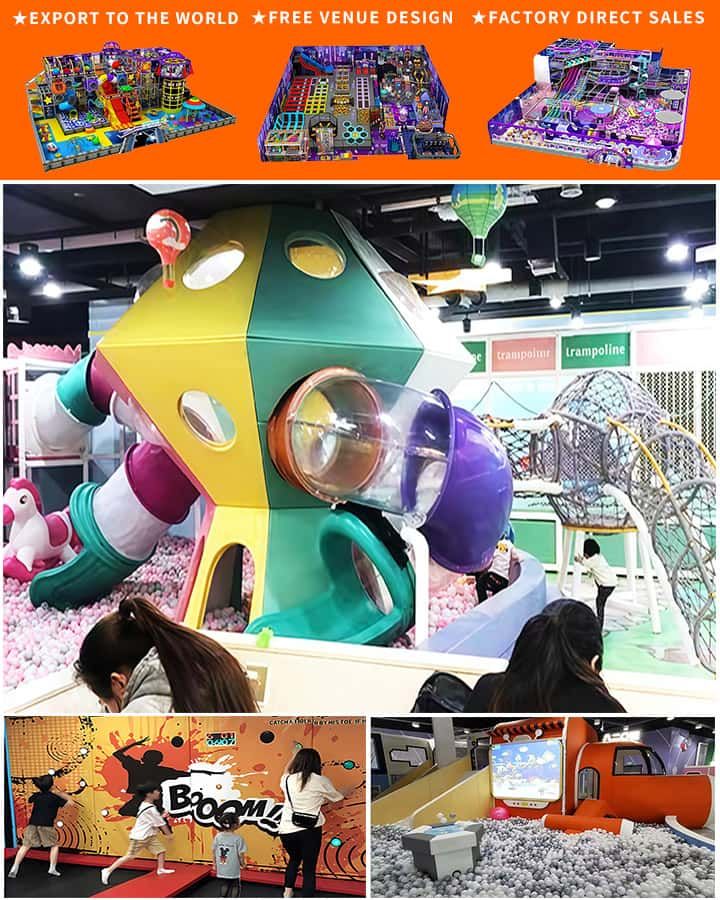In today’s fast-paced world, providing a safe and stimulating environment for children to play in is more important than ever. An indoor play area can offer endless hours of fun while promoting physical, cognitive, and social development. Here’s how you can create the ultimate indoor play space for your child that is both engaging and secure.
1. Safety First
Safety should be your top priority when designing an indoor play area. Ensure that the space is free from sharp edges, small parts that could be swallowed, and electrical hazards. Use non-toxic materials for toys and furniture, and cover any outlets with safety plugs. Install soft flooring like foam mats or carpet to cushion falls and prevent injuries.
2. Age-Appropriate Toys
Selecting age-appropriate toys is crucial to ensure that your child is both entertained and challenged. For toddlers, consider soft building blocks, shape sorters, and plush toys. Preschoolers might enjoy puzzles, art supplies, and interactive books. Older children may benefit from more complex building sets, board games, and imaginative play items like dress-up costumes or play kitchens.
3. Multi-Functional Spaces
 Maximize the utility of your indoor play area by creating multi-functional spaces. A corner could double as a reading nook with comfy pillows and a bookshelf filled with age-appropriate literature. Another section could transform into an arts and crafts station with a foldable table and storage bins for supplies. This flexibility ensures that different activities can be accommodated within the same space.
Maximize the utility of your indoor play area by creating multi-functional spaces. A corner could double as a reading nook with comfy pillows and a bookshelf filled with age-appropriate literature. Another section could transform into an arts and crafts station with a foldable table and storage bins for supplies. This flexibility ensures that different activities can be accommodated within the same space.
4. Interactive Learning Opportunities
Incorporate educational elements into your indoor play area to foster learning through play. Interactive whiteboards, alphabet magnets, number puzzles, and science experiment kits are great tools to promote early literacy, numeracy, and scientific curiosity. Educational toys that encourage problem-solving and critical thinking can also be incredibly beneficial.
5. Sensory Play Area
A sensory play area can provide rich, tactile experiences that are essential for young children’s development. Include items like rice bins, water tables, textured fabrics, and various objects of different shapes and sizes to touch and explore. Sensory play helps improve fine motor skills, hand-eye coordination, and cognitive development.
6. Creative Decor
Make the indoor play area visually appealing with bright colors, wall decals, and themed decorations. Create a space that stimulates imagination and creativity. You could paint one wall to resemble a jungle, ocean, or outer space, depending on your child’s interests. Use string lights or colored bulbs to add a magical ambiance to the room.
7. Organizational Solutions
Keep the play area organized to make cleanup easy and maintain order. Use bins, baskets, and shelves to store toys and supplies. Label each container so that children know where everything belongs and can help with tidying up. An organized space not only looks better but also functions more efficiently.
8. Outdoor Elements
If possible, incorporate some outdoor elements into the indoor play area. A small indoor garden or herb patch can introduce children to nature and basic gardening skills. Even simple potted plants can enhance the aesthetic appeal of the space and provide a calming influence.
9. Parent-Child Bonding Zone
Dedicate a small corner of the indoor play area for parent-child bonding time. This could include a cozy chair for reading together, a mini kitchen set where parents and kids can cook pretend meals, or a small craft table for shared artistic projects. Spending quality time together strengthens the parent-child relationship and creates lasting memories.
Conclusion
Creating an indoor play area for your child doesn’t have to be complicated or expensive. With a bit of planning and creativity, you can design a space that is safe, educational, and incredibly fun. Remember to regularly rotate toys and activities to keep the environment fresh and exciting. Your child will thrive in a play area that caters to their developmental needs while allowing their imagination to run wild.




